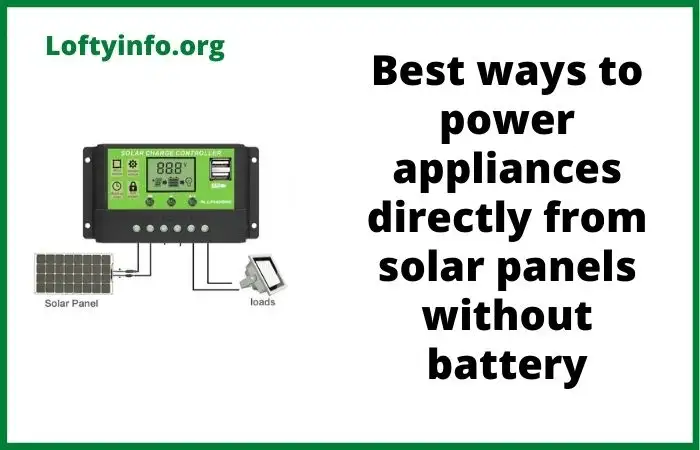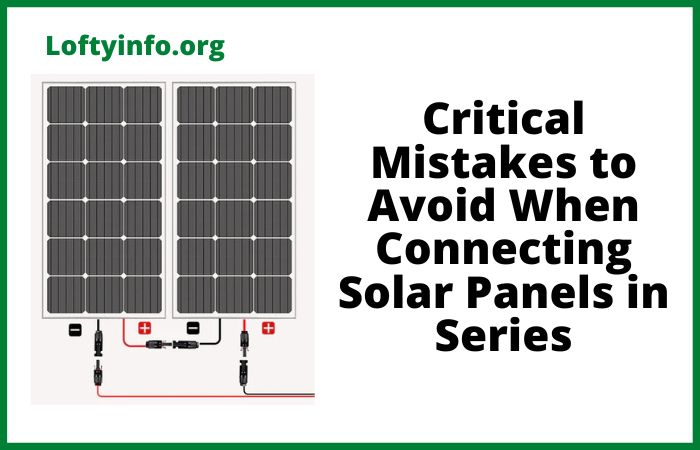Top Causes of Rooftop Solar Panel Fire Hazards
Solar panels are generally safe and reliable energy systems but like any electrical installation, they can pose fire risks if not properly installed, maintained or operated.
Understanding these hazards is crucial for homeowners, installers and maintenance personnel to prevent dangerous situations.
Frequent Causes of Rooftop Solar Panel Fire
1. Poor Electrical Connections and Wiring Issues
Electrical connections are the points where wires join together or connect to equipment.
In solar panel systems, there are numerous connection points between panels, inverters and the electrical grid.
When these connections are loose, corroded or improperly made, they create resistance that generates heat.
When electrical current flows through a poor connection, it encounters resistance much like squeezing a garden hose creates pressure.
This resistance converts electrical energy into heat.
Over time, this heat can become intense enough to melt wire insulation, create sparks or ignite nearby combustible materials like roofing materials or dried leaves.
Common Scenarios
a) Loose Wire Nuts or Connectors from Poor Installation
Wire nuts are plastic caps that twist onto stripped wire ends to create electrical connections. When installers rush or lack proper training, they may not twist these connections tight enough or may not strip the right amount of insulation from wires.
A loose connection has gaps where electricity must jump across, creating resistance and heat.
Over months or years, the heating and cooling cycles cause the connection to become even looser, eventually creating enough heat to melt the plastic wire nut or ignite nearby materials.
b) Incompatible Connectors Creating Poor Electrical Bonds
Different manufacturers use different connector types and sometimes installers mix brands or use adapters incorrectly.
For example, trying to connect a male MC4 connector from one brand to a female connector from another brand might seem to work but the internal contact points may not align properly.
This creates a high resistance connection that generates heat under normal electrical loads.
The problem may not be immediately apparent but develops over time as the poor connection deteriorates.
2. Arc Faults in DC Circuits
An arc fault is an unintended electrical discharge that jumps across a gap in the electrical circuit.
Think of it like a continuous spark or lightning bolt on a smaller scale.
In solar panels, DC (direct current) electricity flows from the panels to the inverter and arc faults can occur anywhere along this path.
Direct current arcs are particularly dangerous because they can sustain themselves much longer than alternating current arcs.
A direct current arc can reach temperatures of over 3,000°F (1,650°C) which is hot enough to melt metal and easily ignite any combustible materials nearby.
Unlike AC electricity that changes direction 60 times per second, DC flows continuously in one direction making arcs harder to extinguish naturally.
Common Scenarios
a) Damaged Cable Insulation Exposing Bare Wires
Cable insulation is the protective plastic or rubber coating around electrical wires.
This insulation can be damaged during installation when cables are pulled too tightly around sharp edges or when installers use inappropriate tools that nick the surface.
Over time, UV radiation from sunlight can make plastic insulation brittle and crack.
When insulation fails, bare positive and negative wires can come close together or touch creating an arc fault.
Even small gaps between exposed wires can allow electricity to jump across, especially in humid conditions.
b) Moisture Entering Electrical Connections
Water is conductive and can create unintended electrical pathways.
When moisture enters connection points through damaged seals, loose fittings or capillary action, it can bridge the gap between conductors that should be separate.
This creates a path for electrical current to flow where it shouldn’t often resulting in arcing.
The problem is worse with DC systems because the constant voltage makes it easier for arcs to sustain themselves compared to AC systems where voltage regularly drops to zero.
c) Aging Connectors Developing Gaps Over Time
Electrical connectors rely on spring tension and precise fit to maintain good contact.
Over years of thermal cycling (heating up during the day, cooling at night), the metal components expand and contract repeatedly.
This can cause springs to weaken, contact surfaces to wear or housing materials to deform.
As gaps develop, the contact area decreases, increasing resistance and heat generation.
Eventually, the gap may become large enough for an arc to jump across, especially under high current conditions.
3. Defective or Damaged Solar Panels
Solar panels can develop defects either during manufacturing or through damage during shipping, installation or operation.
This can easily lead to a roof top fire.
These defects can include cracked cells, damaged junction boxes or compromised back sheets (the protective layer on the back of the panel).
Damaged solar panels can create hot spots where electrical current concentrates in small areas thereby generating excessive heat.
Cracked solar cells can create high resistance pathways that heat up significantly.
Damaged junction boxes can allow moisture to enter leading to corrosion and electrical faults.
Compromised back sheets can expose electrical components to weather and physical damage.
4. Installation Errors and Code Violations
Solar panel installation involves complex electrical work that must comply with local building codes and electrical standards.
Installation errors can range from improper grounding to inadequate spacing between panels, while code violations involve not following established safety standards.
Installation errors can create multiple fire hazards.
Improper grounding can allow dangerous voltages to build up on equipment frames, potentially causing arcing.
Inadequate spacing between panels can trap heat and prevent proper ventilation.
Incorrect wire sizing can cause wires to overheat under normal loads.
Failure to follow fire safety codes can make it difficult for firefighters to safely combat fires and can allow fires to spread more rapidly.
Common Scenarios
a) Improper Grounding of Equipment and Racking Systems
Electrical grounding provides a safe path for electrical current to flow to the earth in case of equipment failure or lightning strikes.
Solar panel racking systems must be properly grounded to prevent dangerous voltages from building up on the metal structures.
Improper grounding can occur when grounding wires are too small, connections are loose or grounding rods are inadequate.
Without proper grounding, metal equipment can become electrically hot, creating shock hazards for maintenance workers and potentially causing arcing between different pieces of equipment.
b) Using Undersized Electrical Conductors That Overheat
Electrical conductors must be sized appropriately for the amount of current they will carry.
Using wires that are too small is like trying to drink a milkshake through a narrow straw.
It creates resistance and generates heat.
The National Electrical Code specifies minimum wire sizes based on current carrying capacity and installation conditions.
When installers use undersized wires to save money or due to lack of knowledge, the wires can overheat under normal operating conditions.
This heat can melt wire insulation, create fire hazards and cause voltage drops that reduce system efficiency.
5. Lack of Proper Maintenance and Monitoring
Like any electrical system, solar panels require regular maintenance to operate safely and efficiently.
This includes cleaning, inspection and monitoring of system performance.
Without proper maintenance, small problems can develop into serious hazards over time.
Loose connections can gradually worsen until they create dangerous arcing conditions.
Damaged components that could be easily repaired if caught early can fail catastrophically if left unaddressed.
Monitoring systems can detect abnormal operating conditions that might indicate developing problems.
Common Scenarios
a) Gradual Loosening of Electrical Connections Due to Thermal Cycling
Solar installations experience significant temperature changes throughout each day and across seasons.
During sunny days, panels and electrical components heat up significantly causing metals to expand.
At night and during cold weather, they cool down and contract.
This constant expansion and contraction called thermal cycling can gradually loosen electrical connections over time.
Bolted connections may loosen and even crimped connections can develop gaps.
As connections loosen, electrical resistance increases generating heat that accelerates the loosening process in a dangerous cycle.
b) Undetected Damage from Storms or Other Weather Events
Severe weather can damage solar installations in ways that are not immediately obvious.
High winds can stress mounting hardware causing micro fractures in metal components or loosening fasteners.
Hail may crack panels in ways that are not visible from ground level.
Lightning strikes nearby can cause electrical surges that damage components internally without obvious external signs.
Temperature extremes can cause thermal shock in glass and electronic components.
Without regular professional inspections, this damage can go undetected for months or years, during which time it can worsen and create safety hazards.
Conclusion
While solar panel fires are relatively rare, understanding these common causes helps ensure that solar installations remain safe throughout their operational life.
The key to prevention is proper installation by qualified professionals, regular maintenance and staying informed about best practices in solar safety.
By addressing these potential hazards proactively, solar energy can continue to provide clean, safe power for decades to come with scenarios that will cause a solar roof top fire.






